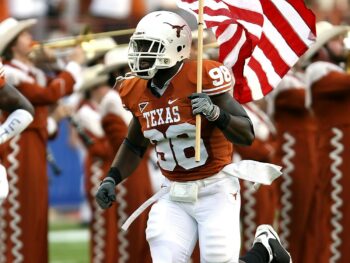Student debt is a significant financial burden for millions of Americans, with total U.S. student loan debt surpassing $1.7 trillion in 2023. For many, this debt can take decades to repay, causing long-term financial stress and limiting life choices such as home ownership, starting a family, or even pursuing further education. While paying off student loans is a reality for most borrowers, there are several options to get this debt discharged or forgiven under certain circumstances. Knowing these options can make a difference for those struggling with the weight of student debt.
What is Student Debt Discharge?
Student debt discharge refers to the cancellation of a borrower’s loan obligation, meaning they no longer need to repay all or part of their debt. While it’s not an option for everyone, several federal and private loan forgiveness programs exist for borrowers who meet specific criteria. These discharge opportunities usually involve public service, permanent disability, or extreme financial hardship. Understanding how these programs work and their eligibility requirements can help borrowers reduce or eliminate their student debt burden.
Common Ways to Get Student Debt Discharged
There are several ways student loans can be discharged, ranging from federal forgiveness programs to legal avenues such as bankruptcy. Below are some of the most commonly available options for discharging student debt.
1. Public Service Loan Forgiveness (PSLF)
Public Service Loan Forgiveness (PSLF) is one of the most well-known student loan forgiveness programs. It is available to borrowers who work full-time for a qualifying public service employer, such as government organizations or non-profit entities. Under PSLF, after making 120 qualifying monthly payments under an income-driven repayment (IDR) plan, the remaining loan balance is forgiven.
Eligibility Criteria:
- You must work full-time for a qualifying employer.
- You must make 120 qualifying payments while enrolled in an IDR plan.
- You must have Direct Loans (other types of loans can be consolidated into Direct Loans to qualify).
Borrowers must ensure they are on the correct repayment plan and employment type to remain eligible for PSLF, and they should submit an Employment Certification Form annually to track their progress.
2. Income-Driven Repayment (IDR) Forgiveness
Income-Driven Repayment (IDR) plans are designed for borrowers whose income makes it difficult to repay student loans under the standard 10-year repayment plan. IDR plans cap monthly payments based on your income and family size. After making payments for 20 to 25 years, depending on the plan, any remaining loan balance is forgiven.
There are four main types of IDR plans:
- Revised Pay As You Earn (REPAYE)
- Pay As You Earn (PAYE)
- Income-Based Repayment (IBR)
- Income-Contingent Repayment (ICR)
While IDR forgiveness can be a lifeline for borrowers with large debts and low incomes, it is important to note that any forgiven balance is currently considered taxable income. However, legislation passed in 2021 (under the American Rescue Plan) ensures that IDR forgiveness amounts will not be taxed through 2025.
3. Total and Permanent Disability Discharge
Borrowers who are totally and permanently disabled may qualify for a Total and Permanent Disability (TPD) discharge, which eliminates the need to repay federal student loans. To qualify for TPD discharge, a borrower must provide proof of their disability through documentation from the U.S. Department of Veterans Affairs (VA), Social Security Administration (SSA), or a physician.
Eligibility Criteria:
- You must have a doctor certify that you are unable to engage in substantial gainful activity due to a physical or mental impairment.
- Veterans can qualify if the VA determines their service-connected disability makes them unemployable.
- SSDI or SSI recipients can qualify if their disability review period is at least five to seven years.
If approved, the loans are discharged, but the borrower must meet ongoing eligibility requirements for a monitoring period of three years to ensure they remain eligible.
4. Closed School Discharge
If the school you attended closes while you're enrolled or soon after you withdraw, you may be eligible for a Closed School Discharge, which cancels 100% of your federal student loans related to that school. To qualify, the closure must have occurred while you were enrolled or within 120 days after you withdrew. However, borrowers who choose to complete their education at another institution, either by transferring credits or via a teach-out agreement, are not eligible for this discharge.
5. Borrower Defense to Repayment
The Borrower Defense to Repayment program is available to borrowers whose schools misled them or engaged in fraudulent practices. If a borrower can prove that their school misrepresented its programs, accreditation, or job placement rates, they may be eligible to have their loans discharged.
The U.S. Department of Education reviews borrower defense applications and may grant full or partial loan discharge based on the circumstances. This type of discharge has gained significant attention in recent years, especially with high-profile cases involving for-profit colleges.
6. Bankruptcy Discharge
While it’s often said that student loans are not dischargeable in bankruptcy, it is possible to have federal and private student loans discharged through bankruptcy under certain conditions. To do this, borrowers must prove that repaying the loan would cause undue hardship, which is a high bar to meet. Courts use the Brunner Test to determine undue hardship, which requires showing that:
- The borrower cannot maintain a minimal standard of living while repaying the loan.
- The financial situation is likely to persist.
- The borrower has made good-faith efforts to repay the loan.
If a borrower meets these criteria, their loans can be discharged in bankruptcy. However, this process can be challenging and often requires legal assistance.
Conclusion
Student loan debt can feel overwhelming, but there are several ways to discharge or forgive loans under the right circumstances. Programs like Public Service Loan Forgiveness, Income-Driven Repayment forgiveness, and Total and Permanent Disability Discharge provide crucial relief for those who qualify. Additionally, legal pathways like borrower defense claims and even bankruptcy can offer debt relief for borrowers facing significant hardship.
Understanding your options and taking the appropriate steps to qualify for discharge can provide long-term financial relief, allowing borrowers to move forward without the burden of crushing student loan debt.


